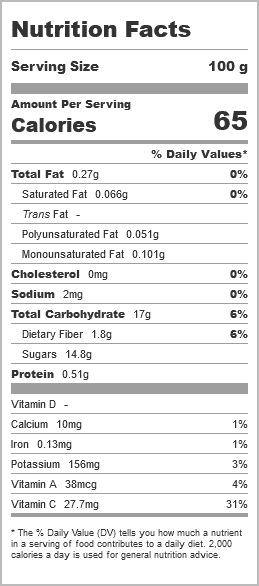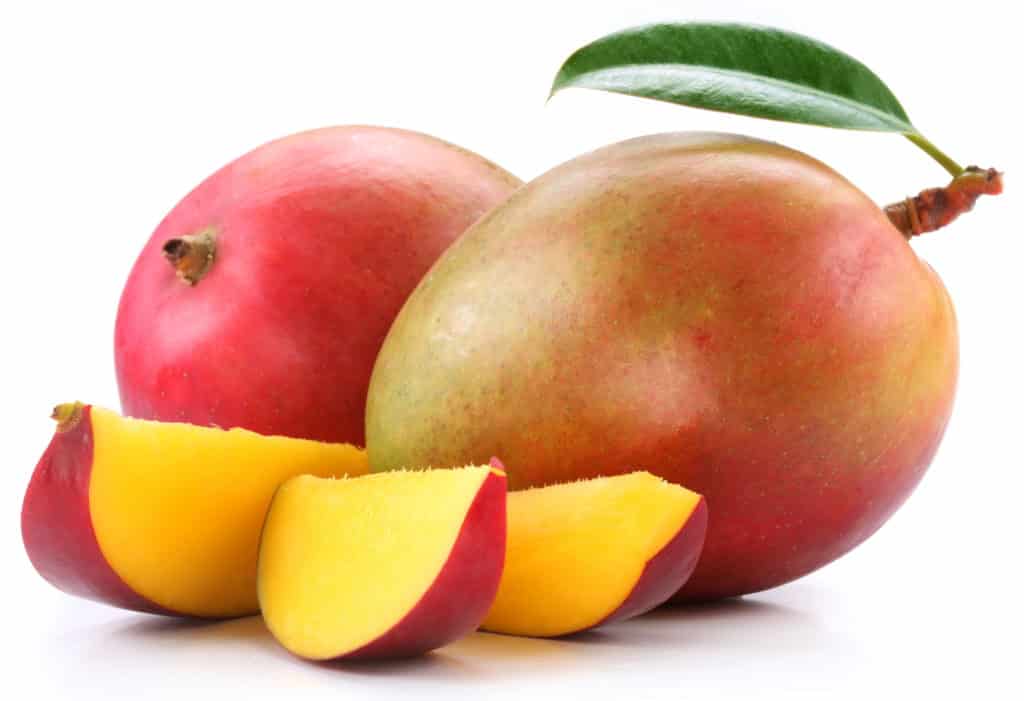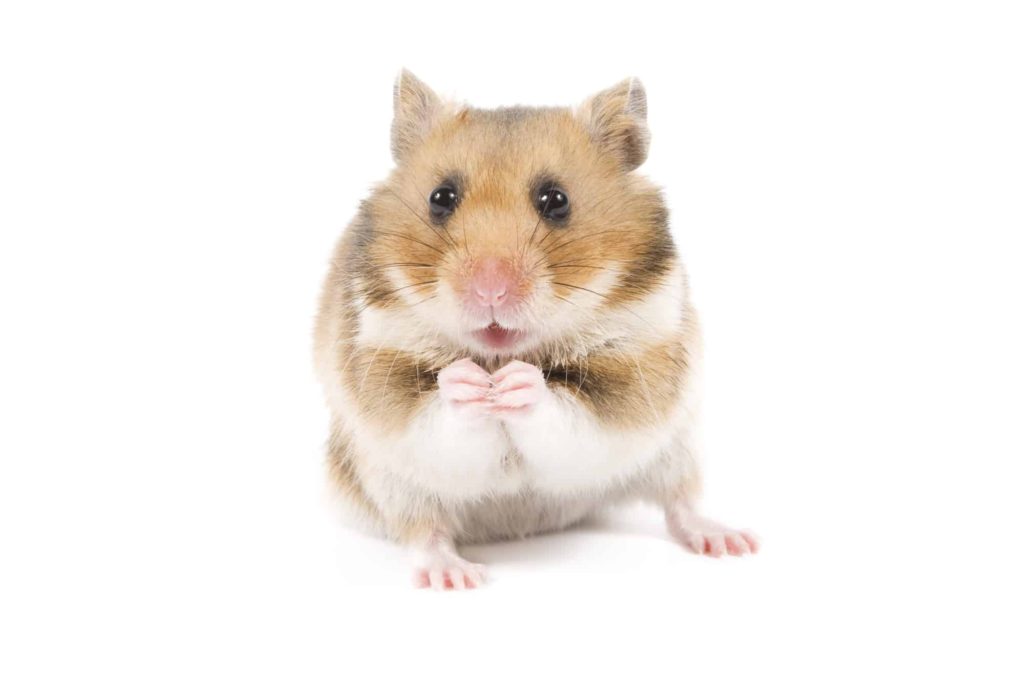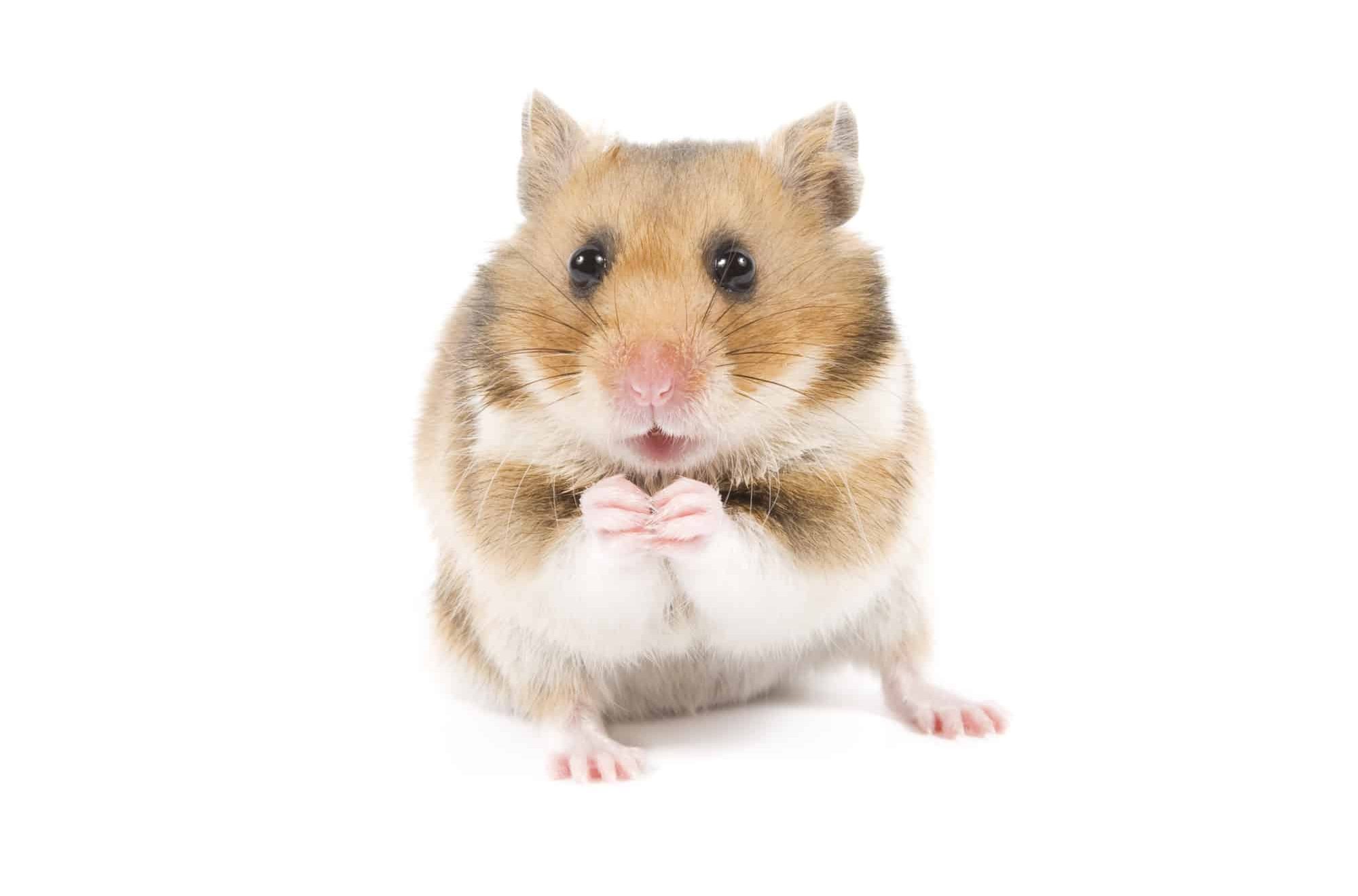Mango is an incredibly tasty fruit. So, it is no wonder that so many people love it. If mango is one of your favorite fruits, then it wouldn’t be surprising if you ever wanted to give mangoes to your hamster. But can hamsters eat Mango? How much mango can you give your hamster? What are the risks of feeding mangoes to your hamster? Read this blog post to find out.
Mango – Nutrition Data
In this section, let’s find out the amount of different nutrients 100g of mangoes contain.

(Source: Fat Secret)
Can you give your hamster mango?
Before we find out the answer to the above question, let’s find out why we should or should not give mangoes to hamsters.

Health benefits of Mango
1. Mango is a rich source of several important vitamins and minerals. It is an incredible source of Vitamin C. The body needs Vitamin C to grow and repair tissues, heal wounds, and for the proper functioning of the immune system. Mango is a good source of Vitamin A as well. Vitamin A strengthens the immune system and improves vision. Mango also contains Vitamin E, which keeps the eyes and skin healthy while strengthening the immune system. Vitamin K, another vitamin present in mango, is needed to synthesize proteins that aid blood coagulation and the building of bones. So, it helps minimize blood loss after an injury.
2. Mango is also rich in several B vitamins. One of these vitamins is Vitamin B6. It helps the skin, nerves, and brain function properly and is needed for the metabolism of proteins, fats, and sugars (Source: WebMD). Vitamin B9, another vitamin present in mangoes, is needed for the formation of red blood cells and healthy cell growth and function (Source: Mayo Clinic). Besides vitamins B6 and B9, Mango also contains vitamins B2 and B3. Both these vitamins help the body convert carbohydrates into energy. Besides that, Vitamin B2 also helps the body convert vitamin B6 into a usable form. Vitamin B3 helps the body produce hormones and helps reduce cholesterol levels and the risk of stroke (Source: SFG).
3. Mango is a rich source of the mineral copper, which helps the body make red blood cells and helps the nervous and immune systems function properly. Mango also contains other minerals like potassium and magnesium. Potassium reduces sodium’s harmful effect on blood pressure and helps the heartbeat stay regular. It is also needed for the proper functioning of nerves and the contraction of muscles. Magnesium helps bones grow and helps muscles and nerves function properly.
5. Mango is rich in antioxidants like rhamnetin, mangiferin, anthocyanins, catechins, gallic acid, benzoic acid, and kaempferol. These plant compounds can protect the body from oxidative stress caused by free radicals. Oxidative stress can cause chronic diseases like cancer, diabetes, etc. Thus, mango can protect the body from such chronic diseases. Among these antioxidants, mangiferin is a super antioxidant that not only protects the body from oxidative stress but is also good for heart health because it protects heart cells from oxidative damage, inflammation, and death and may reduce the levels of cholesterol, triglycerides and fatty acids in the body (Source: Healthline).
6. Mango is low in calories. 100g of fresh mango contains only 65 calories. The calorie density (The number of calories per unit volume) of mango is very less. So, eating fresh foods like mango at the start of a meal can prevent overeating later on in the meal (Source: PubMed). Thus, mango can help in losing weight healthily.
7. Mango contains a group of enzymes called Amylases. Amylases are digestive enzymes that break down food molecules into components that the body can absorb easily. For example, Amylases break down complex carbohydrates that are difficult for the body to absorb into simple sugars like glucose and maltose that are easier for the body to absorb. The Amylase content in mango increases as it ripens. That’s why ripe mangoes are sweeter than unripe mangoes. Moreover, mango contains a lot of water and a little bit of fiber. Both these constituents can help promote regular bowel movements and prevent digestive problems like constipation and diarrhea. Thus, mango can help improve digestive health.
Risks
1. Mango is high in sugars. 100g of Mangoes contain almost 15g of sugars. So, overfeeding mangoes to your hamster can cause a spike in blood sugar levels and lead to diabetes.
2. Even though 100g of mangoes contain only 65 calories, it is still more than many other fresh fruits and vegetables. So, if mangoes are fed too often, the calories can quickly add up and lead to weight gain and obesity.
3. Mangoes contain a little bit of dietary fiber. But if you give too much of mangoes to your hamster, it can cause digestive problems like diarrhea. And since diarrhea can easily lead to a deadly condition called Wet Tail in hamsters, you should not feed too much of mangoes to your hamster.
4. Mangoes can be artificially ripened using chemicals. These chemicals can be dangerous for your hamster. But you can easily check if the mango has ripened artificially or naturally. Put the mango in a bucket of water. If they float, they have been ripened using chemicals. But if they sink, they have ripened naturally (Source: India).
Different types of hamsters vs. mango
Even though mangoes are extremely healthy, not all hamsters can eat the same amount of mangoes. There are different species of hamsters. So, the amount of mango a hamster can eat depends on the species to which he belongs. In this section, let’s find out how much mango each pet hamster species can eat.
Can Campbell dwarf hamsters eat mango?
Campbell dwarf hamsters are tiny hamsters. That’s why they are called dwarf hamsters. So, their digestive systems cannot handle a lot of sugar and acid content. Moreover, their genetic makeup makes them prone to diabetes. So, you should be careful about what you give your Campbell hamster to eat. Therefore, even though fresh fruit is healthy, it is best to avoid sweet fruits like mangoes since they contain a lot of sugar (Source: Online Hamster Care). But if you really want to give mango to your hamster, you can give them a tiny piece of mango, maybe 1/4th of a teaspoon (Source: Hamster Hideout), once in two weeks (Source: Hamster Care).
Can Chinese hamsters eat mango?
Chinese hamsters are also dwarf hamsters. And just like Campbell hamsters, they are also prone to diabetes. So, you should avoid giving mangoes to your Chinese hamster altogether. But if you really want to, you can give up to 1/4th of a teaspoon of mango once in two weeks to your Chinese dwarf hamster.
Can Russian dwarf hamsters eat mango?
The Russian dwarf hamster, also known as the Winter White hamster or Djungarian hamster, is also a dwarf hamster. But unlike the Chinese and Campbell dwarf hamsters, not all Russian dwarf hamsters are prone to diabetes, i.e., pure Russian dwarfs are not prone to diabetes, but the hybrids are. But still, it is better to give only 1/4th of a teaspoon of mango to them once in two weeks or avoid mango altogether.
Can Roborovski hamsters eat mango?
Roborovski hamsters are the smallest hamster species. So, you might think that they are prone to diabetes. But despite being the smallest hamster species, they are not prone to diabetes because they are also one of the most active hamster species. They keep running all the time. So, they burn the sugars in the food they eat pretty quickly. Therefore, they are not prone to diabetes as much as the other dwarf hamsters. Hence, you can give them a small piece of mango once every week. But the piece of mango you give a Roborovski hamster should be small enough for him to hold in his paw, not any bigger.
Can Syrian hamsters eat mango?
Syrian hamsters are the largest breed of pet hamsters. So, their digestive systems can handle more sugar and acid content than other pet hamsters. Therefore, you can give your Syrian hamster a small piece of mango, the size of his paw, once every week.
FAQ
Can hamsters eat dried mango?
When you dry a mango, it loses most of its water content, whereas its sugar content becomes concentrated. Therefore, dried mango contains more sugar content than ripe mangoes. Dried mango can also be stickier than fresh mango. Hence, it can stick to your hamster’s mouth and cheeks. So, you should never give dried mangoes to your hamster.
Can hamsters eat frozen mango?
Cold food can cause digestive issues in hamsters. So, you shouldn’t give frozen mango to your hamster. But once it is thawed and brought to room temperature, you can give the mango to your hamster (Source: Tiny Pet Tales).
Can hamsters eat mango ice cream?
Mango ice cream can be a tasty snack for you. But for hamsters, it can be deadly because it contains a lot of sugars, and it is cold as well. Hence, it can easily upset your hamster’s digestive system. So, you should never give mango ice cream to your hamster.
Can hamsters drink mango juice?
Just like mango ice cream, mango juice can also contain added sugars and preservatives. Moreover, they don’t contain any fibers that the fresh fruit contains. Hence, mango juice is not healthy, so you shouldn’t give mango juice to your hamster.
Can hamsters eat mango peel?
Mango peels can be thick and can choke your hamster. So, avoid giving mango peels to your hamster (Source: PetKeen).
Can hamsters eat mango seeds?
No, you shouldn’t give mango seed to your hamster because it is too big for a hamster to hold and eat.
Fun facts
Mango
Mango is an edible fruit produced by the tree Mangifera indica. It is the national fruit of India, the Philippines, and Pakistan. The mango tree is the national tree of Bangladesh.
Mango trees grow big and live long. They can grow up to 40m tall, covering an area with a radius of up to 15m, and can live up to 300 years.
It is not exactly clear how many varieties of mango are there. Most probably, there are 500 to 1000 varieties in the world. But only 350 of them are grown commercially. Mango is grown in more than 100 countries. Of these countries, India alone produces 45% of the global supply. But even though India is the largest producer of mangoes, India contributes to only 1% of the international mango trade because India consumes most of its own production.
Origin
Mangoes were first cultivated probably 4,000 years ago in the Indomyanmarian area (Source: Frutas-Hortalizas). In India, there are still wild mango forests. Mango has been part of the Indian culture for several centuries, which is obvious from its usage in religious ceremonies and presence in folklore. Even Buddha was gifted a mango grove so that he could find repose in its shade (Source: Britannica). The spread of Buddhism resulted in the spread of mangoes across Southeast Asia. The Persians then carried mangoes to West Asia and East Africa in the 10th century.
The Portuguese explorers who came to Kerala (a southern state of India) in 1498 for the spice trade developed a liking for mango. They most likely adopted the Malayalam (the language spoken in Kerala) word ‘Manna’ as ‘Manga,’ which later became ‘Mango’ in English and Spanish. But since mango seeds retain their viability only for a short time, they couldn’t be transported to the Western hemisphere immediately. It took the Portuguese explorers two more centuries to bring the fruit to Brazil, from where it spread throughout the Americas. And a century later, mango trees started growing in the USA (Source: Wisconsin Department of Public Instruction).
Summary
Mango is a fruit that offers several health benefits:
- It contains the vitamins A, C, E, K, and several B vitamins that the body needs.
- Mango contains minerals like copper, potassium, and magnesium that are beneficial to the body in many ways.
- It contains several antioxidants that help prevent chronic diseases like cancer.
- It is low in calories and contains little amount of dietary fiber.
- It contains digestive enzymes that can improve digestion.
Yet, despite all its benefits, mango also contains a lot of sugars. So, it is only safe for two species of pet hamsters to eat – Roborovski and Syrian hamsters – and that too, only in moderate amounts. Mango should never become regular food for these animals. The other pet hamster species – Campbell, Chinese, and Winter White – cannot tolerate the amount of sugar mango contains. So, it is better not to give any mangoes to these pet hamsters.



